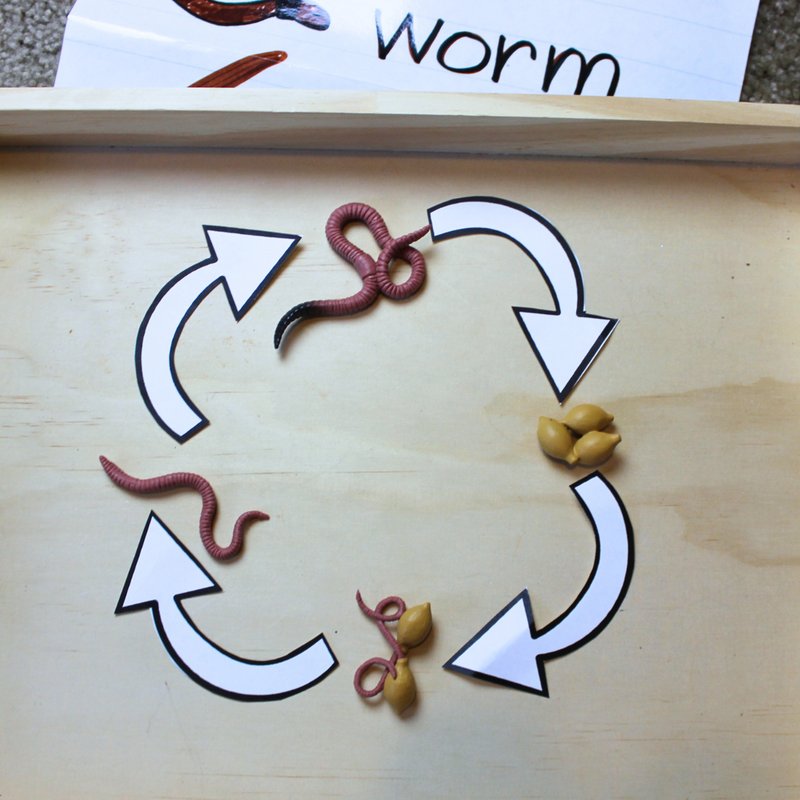
Wolf worms, often associated with wolf spiders as they share a unique symbiotic relationship, have a life cycle marked by several stages: from egg to larva, then to pupa, and finally, adulthood. If you’re interested in field studies or just curious about nature, understanding their life cycle can deepen your appreciation for these creatures. Let’s dive into the stages of the wolf worm’s life and discover how you can document your findings effectively.
Understanding the Wolf Worm Life Cycle
The life cycle of the wolf worm typically begins with eggs laid by adult females in a cozy, safe environment. These eggs are often tucked away in soil or under debris to protect them from predators. Over time, the eggs hatch into larvae, which might look like miniature versions of their adult selves but with a lot of growing up still to do.
Here’s the thing: wolf worms are fascinating because they can often be found living within the egg sac of a wolf spider. This relationship provides the larvae with a ready-made home and protection as they develop. You might be wondering what happens next, right? After a period of feeding and growth, the larvae enter a pupal stage, which is like their cocoon phase. It’s where the real transformation happens before they emerge as adults, ready to start the cycle all over again.
Field Study Basics
To document the life cycle of the wolf worm, you’ll need a solid plan for your field study. Start by selecting a location where wolf spiders are common. This could be a local park, a forest, or even your backyard. Remember, finding a spot with rich biodiversity will give you a better chance of observing these fascinating creatures.
Once you’ve picked your spot, gather some essential tools. A **notebook** for recording observations, a **camera** for taking pictures, and perhaps a **magnifying glass** to get a closer look at the eggs and larvae will come in handy. Honestly, having the right tools can make your documentation much more effective and enjoyable.
As you set out to observe, note the conditions of the habitat. Temperature, humidity, and the presence of other organisms can all influence your findings. Keeping a detailed log of your observations can help you piece together a fuller picture of the wolf worm’s life cycle.
Documenting Each Stage
When you’re ready to document the life cycle stages, be systematic about it. Start with the **egg stage**. Look for clusters that might be hidden under leaves or within spider webs. Take notes on their appearance, size, and the environment around them. You can even sketch them if you’re feeling artistic!
Next, look for the **larval stage**. These little guys can be tricky to spot, as they tend to blend into their surroundings. They often feed on organic matter, so check areas with lots of decomposing plant material or soft soil. Capture their growth progress in your notebook, noting any changes in color, size, or behavior.
Moving on to the **pupal stage**, this is the time when you’ll want to observe closely. The pupae can be hard to find, often camouflaged in soil or hidden amongst debris. Document the duration of this stage, as it can vary depending on environmental conditions. Keep track of changes you notice, such as movement within the pupal casing—this indicates that an adult is about to emerge!
Tips for Effective Observation
When you’re out in the field observing, here are some helpful tips to make your documentation more fruitful:
- Be patient: Nature doesn’t always cooperate. Sometimes you’ll need to sit quietly and wait for the right moment.
- Take multiple photos: Capture various angles of your subjects. This will help you compare stages later on.
- Use a guide: A field guide on local insects and spiders can help you identify related species or behaviors that may impact your findings.
By keeping these pointers in mind, you’ll equip yourself to gather valuable data on the wolf worm life cycle, and who knows—you might even discover something new in the process!
Why Documenting Wolf Worms Matters
You might be asking, why should we even care about documenting the life cycle of wolf worms? Well, here’s the thing: every creature plays a role in its ecosystem. Understanding wolf worms can help scientists and researchers appreciate the balance of life within their habitats. They can serve as indicators of environmental health, signaling whether a habitat is thriving or under stress.
In addition, your documentation can contribute to broader scientific efforts. By sharing your findings, you may help others understand changes in wildlife populations or the impacts of climate change. Your work can inspire fellow nature enthusiasts and further promote conservation efforts.
Documenting the life cycle of wolf worms is a rewarding experience that not only enhances your knowledge of these fascinating creatures but also contributes to scientific understanding. With patience and careful observation, you can uncover the many stages of their life cycle—from eggs to adults—and enjoy the adventure of exploring the natural world.
So grab your notebook and head out into the field! The wolf worms are waiting, pen in hand, ready to share their amazing story with you.

